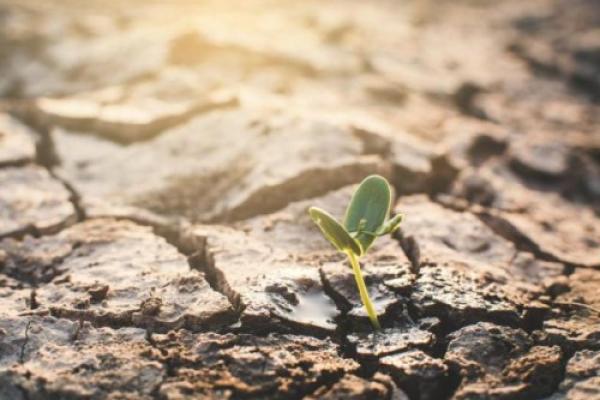As Drought Emerges, Ohio State creates Drought Rapid Response Team to Provide Resources for Farmers, Growers

From brittle, brown lawns and cracked soils to dry garden beds and crops, the signs are clear statewide: Ohio is officially in a drought.
The recent stretch of warmer temperatures combined with scant rainfall in recent weeks has resulted in moderate drought conditions over 62% of the state, with nearly 98% of Ohio considered abnormally dry, according to the June 8 update from the U.S. Drought Monitor.
“Moderate drought” is the initial level of drought, while “abnormally dry” means an area is moving in the direction of drought, according to the U.S. Drought Monitor.
And while it isn’t time to panic, these are rapidly changing conditions that need to be monitored, said Aaron Wilson, Ohio State University Extension’s field specialist in agriculture weather and climate and the State Climatologist of Ohio. OSU Extension is the outreach arm of The Ohio State University College of Food, Agricultural, and Environmental Sciences (CFAES).
“Our lawns are feeling it, our gardens are feeling it and now we’ve got a couple of communities that have issued water-reduction requests,” Wilson said. “There have also been agriculture impacts, including diminished soil moisture, deteriorating grazing conditions, and newly emerged crops that are starting to feel the stress as well.
“We should be seeing an inch of rain per week to hit normal rainfall amounts, so if we’re not hitting an inch per week, we’re not making up any rainfall deficits. And once we get into June, July and August, it’s really difficult to make up the moisture deficits.”
Amid growing concern among farmers and producers statewide about what drought can mean for their crops and livestock, CFAES has created a 25-member Drought Rapid Response team that convenes weekly to monitor conditions to provide farmers, producers, gardeners, turfgrass managers and others information on how to manage through a drought, said Sam Custer, OSU Extension interim assistant director, agriculture and natural resources.
The team has created an Early Drought Response webpage to provide resources for Ohio's farmers, Custer said. The page provides the best science-based recommendations to protect livestock, crops, and farm operations from weather impacts, commodity price changes and extreme events.
Custer said the rapid response team was created because of early signs of drought last week and because OSU Extension was hearing from educators and specialists statewide about concerns farmers and producers were expressing about growing drought conditions.
“We’re here to serve Ohio by providing the best researched based information they need to make informed decisions as they deal with drought considerations,” he said. “We’re also coordinating and collaborating with the Ohio Department of Agriculture, as well as providing state and federal elected officials up-to-date information on what we’re finding and recommending.”
To read more about the Drought Rapid Response Team, as well as the magnitude of drought impacts currently being felt across the State of Ohio, see the full article by CFAES's Tracy Turner.
For up-to-date drought resources visit: go.osu.edu/ohiodrought.
